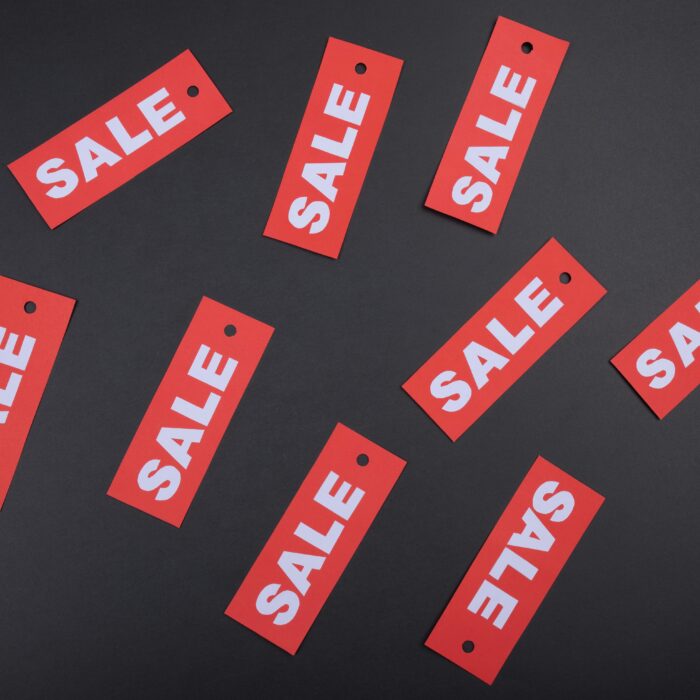How to build an audience for your Amazon brand
by November 21, 2024
The days of choosing a bunch of random products to sell on Amazon are over. In order to scale your business to seven figures and beyond, you need to create a line of products that serves a particular audience and then build a brand, just like an e-commerce seller would with their own Shopify store.
Choose your audience
The first step to creating an audience for your Amazon brand is to choose the right audience. Too often, people source a product and then wonder who they can sell it to. That’s doing it backwards. You’ll be far more successful if you start with the audience and then develop the products they need.
Here are some tips to help you choose your audience:
- Something you’re passionate or knowledgeable about – If you have a particular hobby that you are knowledgeable about (3D printing for crafts, for example) or an area of life that you are passionate about (entrepreneurship, parenting a child with special needs, plant-based nutrition), then you should consider building up an audience of people with similar interests. You will understand their needs and be able to serve them better.
- A need for regular purchases – Most hobbies and interests lend themselves well to e-commerce. Even people interested in minimalism like to home organization products or trendy items with simple design. However, some hobbies aren’t a good fit. For example, someone who is obsessed with couponing will need to buy one or two coupon storage cases, but they won’t need to buy much else after that.
- Lots of product opportunities – You want a hobby that has a variety of product opportunities, from high to low cost and from one-off purchases to regular refills or replacements, if possible.
Choose your first product
Now that you’ve selected your target audience, it’s time to pick the first product. To minimize risk in your business, you should launch one product first, and then use the profits to restock it and source the second product.
Here’s how to choose your first product for this new audience:
- In the $50 – $80 range – You can have success at other price points, but for your first product, it’s smart to have something in the medium range so you can come across as a premium brand without requiring a high-ticket first purchase.
- Great profit margins – Later, when you’re serving an audience that you’ve already built up, you may feel comfortable with profit margins of 30-50% so they stay with your brand and don’t buy from the competition, but with your first product, look for margins of 50-75%.
- Pick a logical first purchase for your audience – Most importantly, your product should be a logical first purchase for this audience. For example, if someone is just getting started scrapbooking, they’re not going to buy a special cabinet designed for storing scrapbooking supplies, but they might purchase a starter kit that includes all the necessary supplies. When you target newcomers to the particular hobby or special interest, then you’re not competing against a favorite brand that an experienced buyer already knows and trusts.
Launch your product
The next step is to launch your first product. Because you’re creating a brand, you might need to think about this a little differently than usual. There are tons of resources available on the topic of launching, but here are a few of the basic needs:
- Listing optimization – From product images to the product description, you need a fully optimized listing to increase conversions.
- Keyword optimization – Especially with a new product when you’re not quite ready to invest in PPC, doing an excellent job at keyword optimization is critical. If you’ve selected a niche audience, it will be even easier for you to get traffic from SEO because these people are searching for very specific things.
- Targeted marketing – Amazon sellers doing retail arbitrage or selling random products based on complicated product research are not doing highly targeted marketing. It doesn’t make sense for them. They rely only on SEO and PPC. But when you are launching a product designed to fit into an overall brand, then your investments in social media marketing and email marketing is more likely to pay off. Every new follower you gain might buy multiple from your brand over time.
Grow your product line
Now that you’ve got a successful, hot-selling product, it’s time to add more to your line! Here are the smart next steps:
- Add higher value products – If there are products that make sense for your audience in the $150 – $200 range, begin to add them as you get more confident in your ability to reach this audience with SEO, PPC, and channels outside of Amazon
- Add products that ascend the purchase order ladder – Your first product was designed to appeal to new buyers within that hobby or special interest. Now you can add next-level products that appeal to intermediate or expert buyers.
- Add regular use products – Do you have any products that require cartridges or refills? Anything that naturally wears down over time or only lasts 3 months? Start offering these lower priced products so that buyers stay within your brand and keep returning.
Build your brand
When building a brand, it’s important to not rely solely on Amazon traffic. Yes, organic search traffic and paid PPC can bring in an initial rush of income, but to sustain your branded business over the long term, you need to build it up consistently.
- Choose the right content marketing channel – Use Instagram posts with relevant hashtags, build up a Facebook group and do product demonstrations and tutorials via Facebook live, or even create native LinkedIn videos if your product appeals to corporate buyers. Choose one channel and dedicate yourself to building up an audience of your target buyers by attracting them with great content.
- Be consistent and persistent – Content is a long game. Initially, it feels like it will never pay off. But if you stay dedicated for a few weeks or months, you’ll start gaining traction. Once you see that organic traffic is actually cheaper, you’ll become addicted to using content marketing and social media marketing to grow your business.
- Build an email list – You’re building a brand, not launching one product. You need a list of target buyers ready to buy from you every time you launch something new. Use social media marketing to build up your email list by giving away freebies and putting an opt-in link in all of your social profiles. Deliver entertaining, high-value emails at least once a week. Also, tell your new fan base about new products, ask them about their needs, and let them know when a hot-selling item comes back in stock.
Successful Amazon sellers are hip to the fact that Amazon has changed. Randomness is not a good business model. Serving a group of customers as well as you can? That’s what makes a great business.
This post is from our friends at Refunds Manager.








